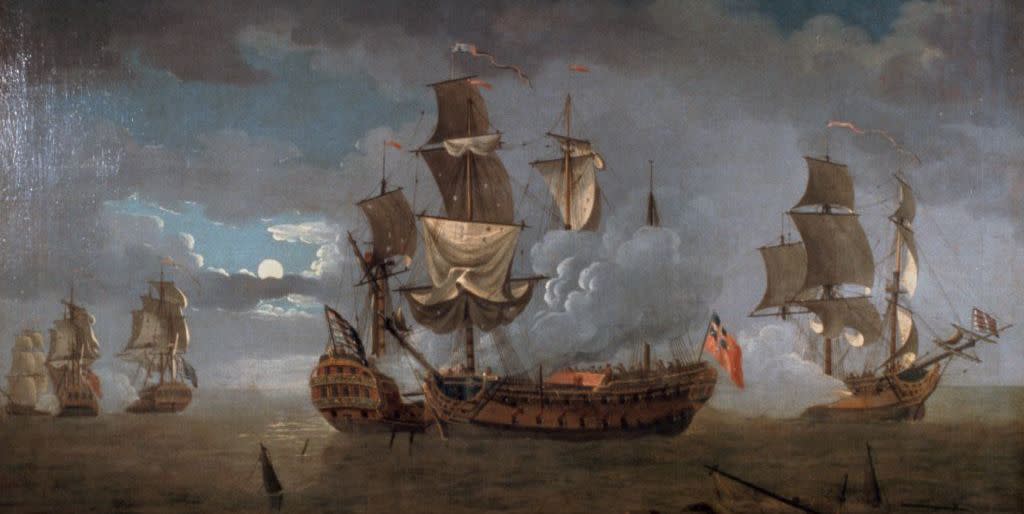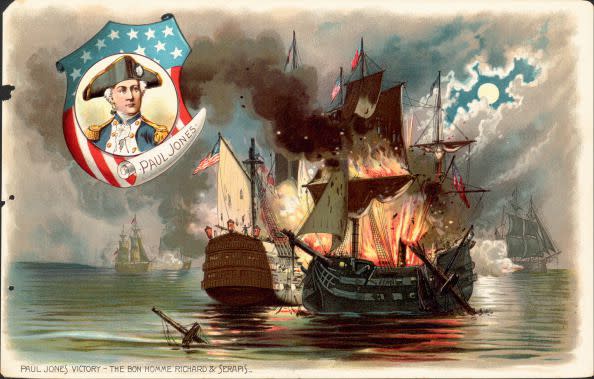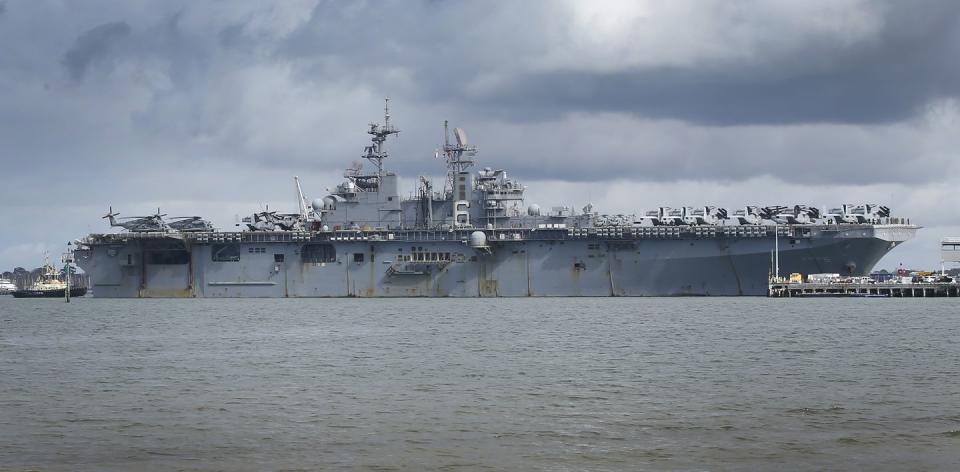The "I Have Not Yet Begun To Fight" Shipwreck Was Just Rediscovered, 239 Years Later

One of America’s very first warships, and a vessel that would become the namesake of a distinguished line of warships, was just discovered in waters off the United Kingdom.
The Bonhomme Richard, commanded at the time by Captain John Paul Jones, was sunk during a duel with two Royal Navy warships during the Revolutionary War. The ship, from which Jones uttered his famous line, “I have not yet begun to fight,” was found literally yards from shore.
As American schoolkids know, the thirteen colonies received substantial, war-winning assistance from France during the American Revolutionary War. French help included sending naval and ground forces to bolster the colonial rebels, and also material support-including warships.
One of those warships was the ex-merchant ship Duc De Duras, which had been assigned to the French East India Company. When the company shut down, it was handed over to the French Navy, who donated the ship to the U.S. Continental Navy. American captain John Paul Jones arrived in France to take command. He armed the ship with 40 deck guns, 20 per side, and commissioned the ship Bonhomme Richard, or Good Man Richard. (The “Richard” in this case was the fictional Richard of Poor Richard’s Almanac, authored by then-ambassador to France Benjamin Franklin.)

On September 23, 1779, an American/French squadron led by Bonhomme Richard made contact with a convoy led by the British warships Serapis and Countess of Scarborough. During the course of battle the Bonhomme Richard sustained heavy damage, and at one point the captain of the Serapis asked Jones if his ship had "struck its colors," a naval tradition signifying surrender in battle. Jones famously replied, “Struck sir? I have not yet begun to fight!” His sailors and Marines rallied, Jones ended up capturing the Serapis-which came in handy when Bonhomme Richard sank the next day.
Over the years numerous American search crews have gone looking for the Bonhomme Richard, but none of them were successful. The Yorkshire Post, a publication located near where the wreck was found, estimates that $200 million has been spent locating the sunken warship. Bruce Blackburn, the head of the maritime archaeology firm that found the wreck, told the Post, “You can walk out onto the wreck from the shore. You can literally go to the beach and look in the water and see where it is. And you can go on the cliffs and look down on it and see the shadow’s outline.”
Although the wreck lies in British waters, under U.S. law it is subject to the Sunken Military Craft Act. Passed into law in 2004, the act states that “the U.S. Navy's sunken military craft remain property of the U.S. regardless of their location or the passage of time and may not be disturbed without the permission from the U.S. Navy.”

Since then, two other U.S. Navy warships have borne the name Bonhomme Richard. The USS Bonhomme Richard (CV-31) was an Essex-class fleet aircraft carrier that fought in the Pacific during World War II, the Korean War, and the Vietnam War. The latest ship to bear the name USS Bonhomme Richard (LHD-6) is a Wasp-class amphibious assault ship with the home port of San Diego.
('You Might Also Like',)

